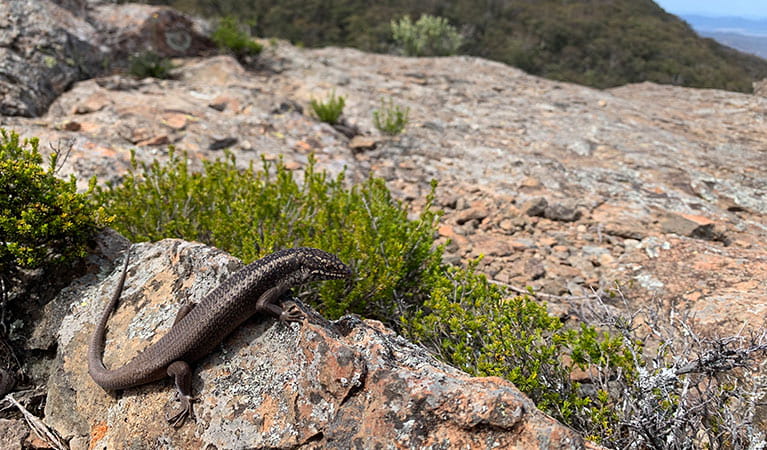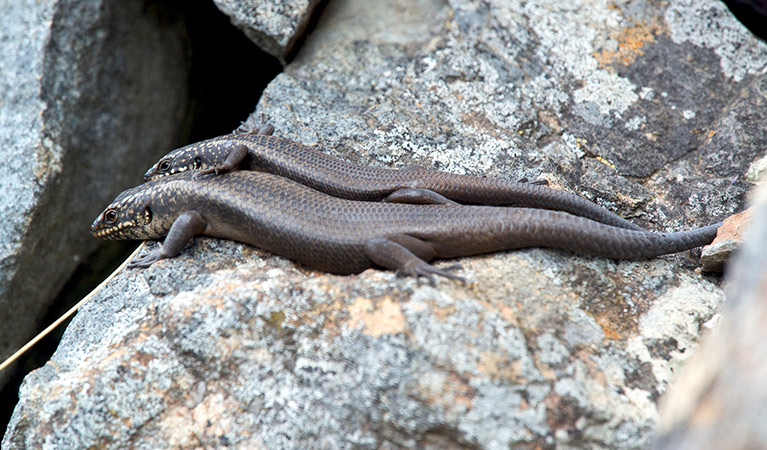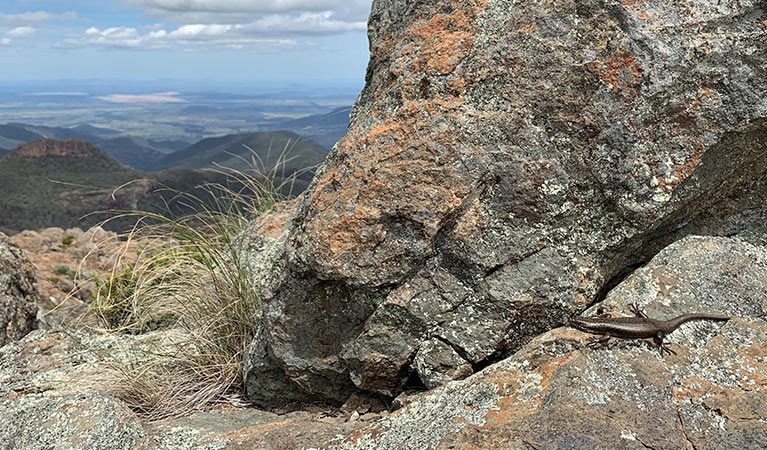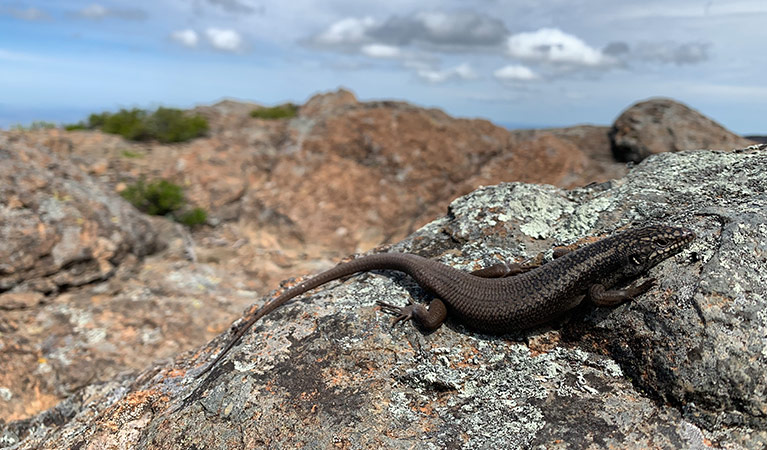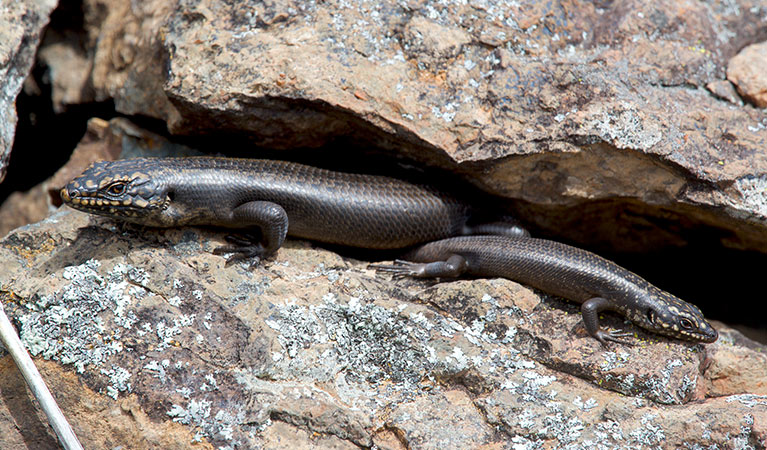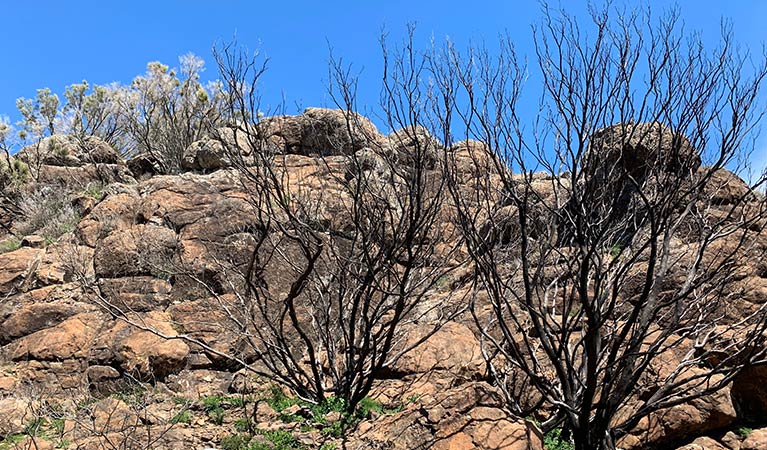Kaputar rock skink
The critically endangered Kaputar rock skink is found only in the high rocky peaks of Mount Kaputar National Park. With one of the smallest ranges of any vertebrate in NSW, this rare reptile is at risk of extinction.
Isolated sky islands
The Kaputar rock skink is known from just 3 high-elevation areas of the Nandewar Range, part of an ancient shield volcano that was last active some 21 million years ago. Initial surveys to locate the skink found it living only in sub-alpine habitat above 1300m. More recent records have found these rare skinks may occur down to 1100m above sea level.
It’s estimated the species’ total distribution is around 30km2. This makes it one of the smallest, most geographically restricted ranges of any vertebrate in NSW.
Other suitable rocky habitat across the top of the range is fragmented, and separated by warmer lowland valleys, which the temperature-sensitive skink seems unable to cross. Future field surveys are planned to see if other isolated populations of Kaputar rock skink might be hiding away on other summits.
Rocky refuges
The Kaputar rock skink faces the harsh winters of Mount Kaputar’s highest peaks by seeking refuge in deep rocky crevices amongst the ancient volcanic rock and lava fields. These offer critical thermal insulation from extreme cold in winter, as well as protection from wildfire in summer.
Another advantage is that during winter months huddled up in their rock hidey-holes, skinks are almost 100% safe from predators.
3 facts about Kaputar rock skinks
Animal facts
- Common name
- Kaputar rock skink
- Scientific name
- Egernia roomi
- Conservation status in NSW
- Critically endangered
Nowhere to hide
Rapid climate warming poses a long-term survival risk for the Kaputar rock skink. Living at the top of the Nandewar Range means that there’s nowhere for them to go as seasonal temperatures rise, and high-elevation habitat that’s reliably cool enough shrinks.
Their habitat is also at risk from wildfires that destroy the vegetation, reduce the skink’s food sources, and make them vulnerable to predators. The skinks’ natural predators include reptiles and birds. Unfortunately, feral animals like cats and foxes also have a taste for these critically endangered skinks.
Feral herbivores like goats, which excessively graze vegetation and foul rock habitat, can make skink shelter sites uninhabitable. Introduced weeds and human disturbance, including rock stacking by visitors, also damage habitat.
With skink populations restricted to such small, isolated areas, they’re at high risk of localised extinction.
How you can help
If you’re visiting Mount Kaputar National Park, help prevent the spread of weeds and soil-borne diseases that can harm the Kaputar rock skink’s delicate habitat by ensuring boots are clean and stay on tracks.
Walking across the elevated lava field of Mount Lindsay you might see rock-stack formations called cairns, made by other visitors. Please avoid moving loose rocks, as this disturbs animal habitat and can obstruct rocky crevices that the Kaputar rock skink relies on. With this rare reptile already restricted to such a tiny area, please leave the rocks for the skinks and other native species.
Extra protections
Part of Mount Kaputar National Park has been declared an Asset of Intergenerational Significance (AIS), providing the strongest legal protections for the Kaputar rock skink and its habitat, to ensure its survival for future generations.
You might also like
-
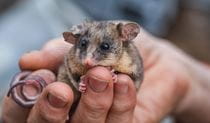
Protecting threatened species in parks
Around 84% of the approximately 900 threatened species in NSW are found in our national parks and reserves. Find out what we're doing to protect threa...
-
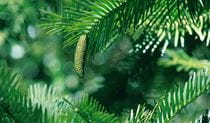
Assets of Intergenerational Significance (AIS)
Assets of Intergenerational Significance (AIS) are declared to bolster protections for an area with exceptional environmental or cultural values, like...
-
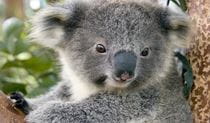
Saving our Species conservation program
Today, we're at risk of losing nearly 1000 of our state's native animals and plants. That's why the NSW Government established Saving our Species. It'...
-
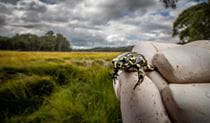
Threatened Species Framework for zero extinctions
The NSW National Parks and Wildlife Service (NPWS) Threatened Species Framework outlines a series of actions to meet our commitment of zero extinction...

